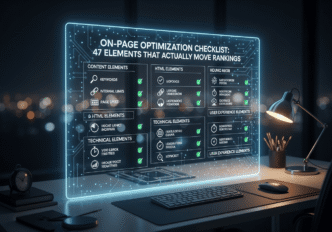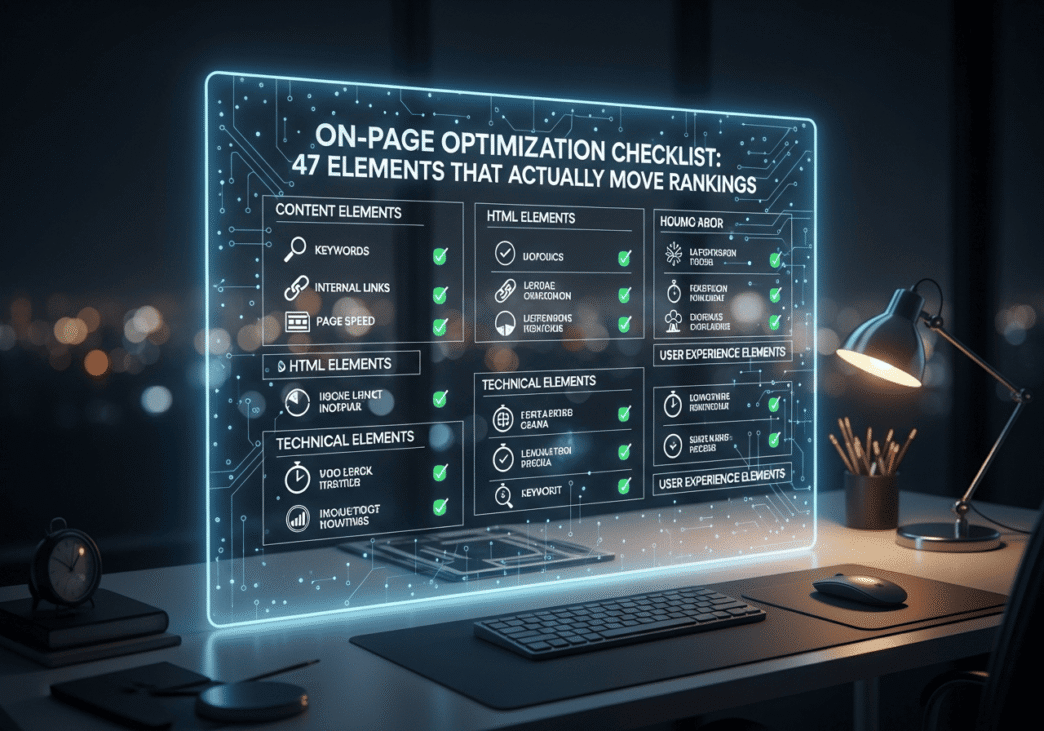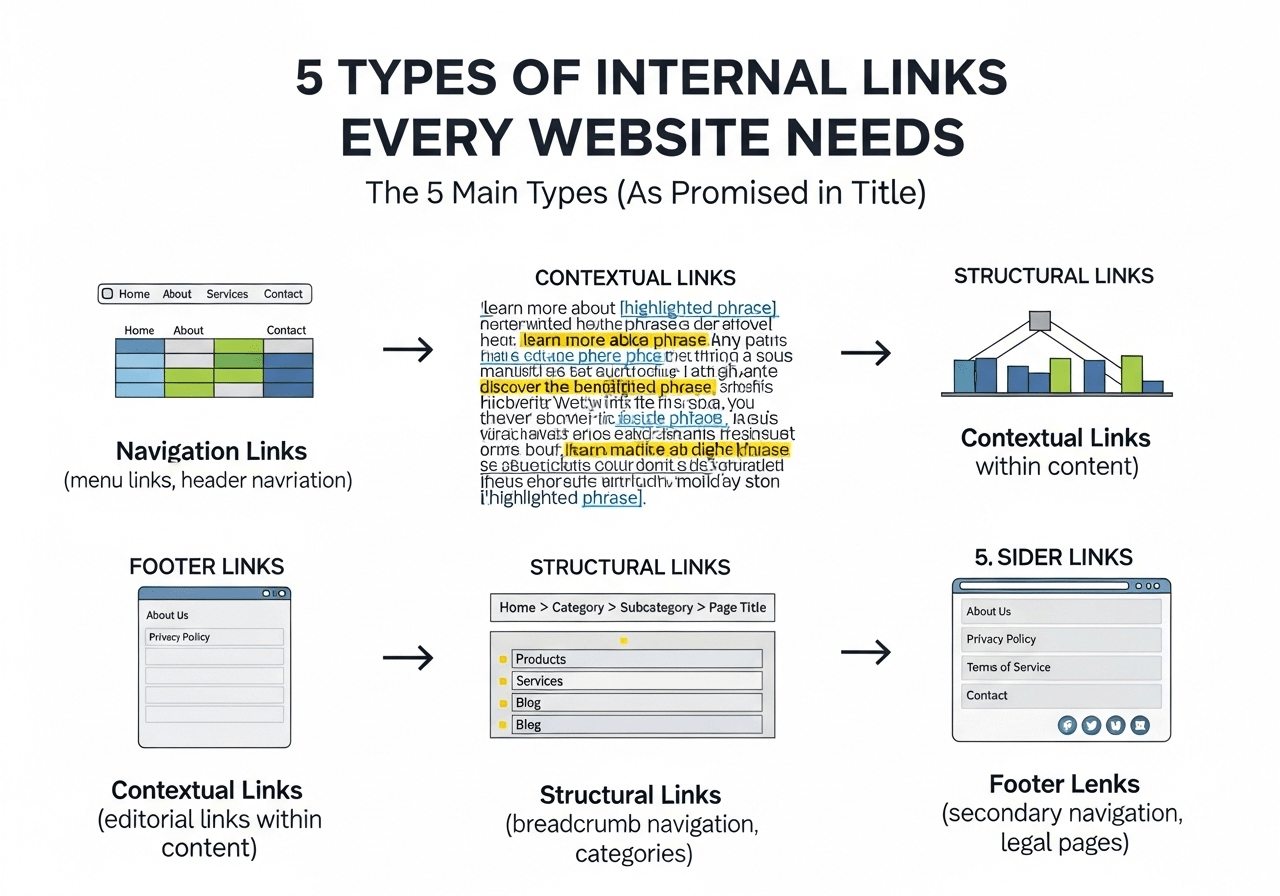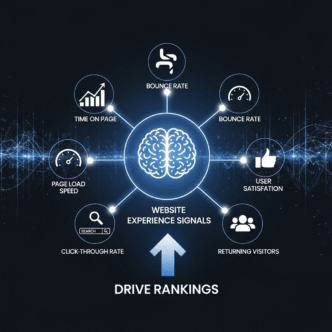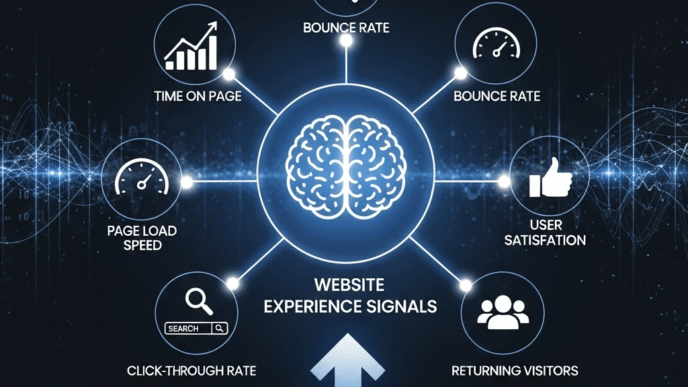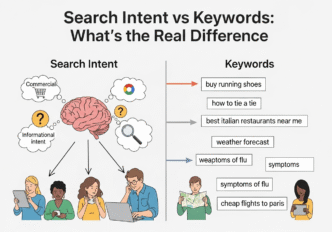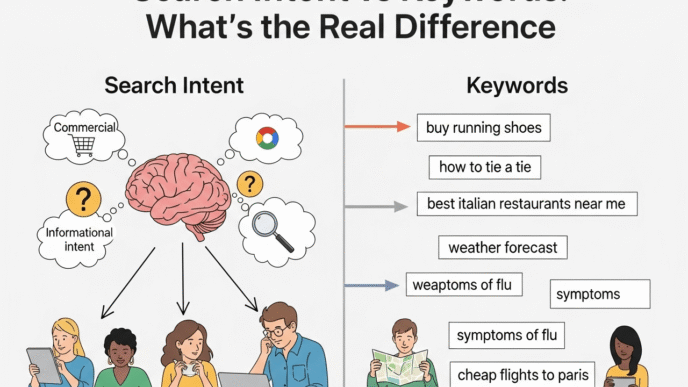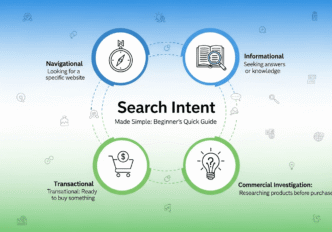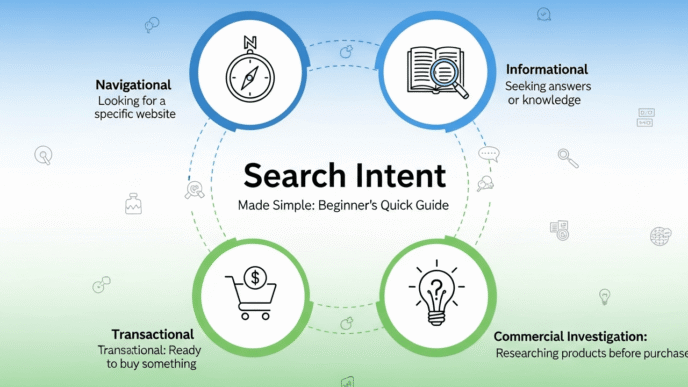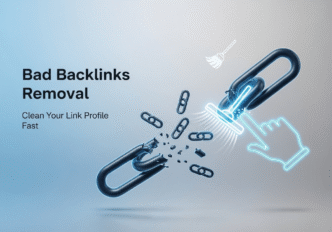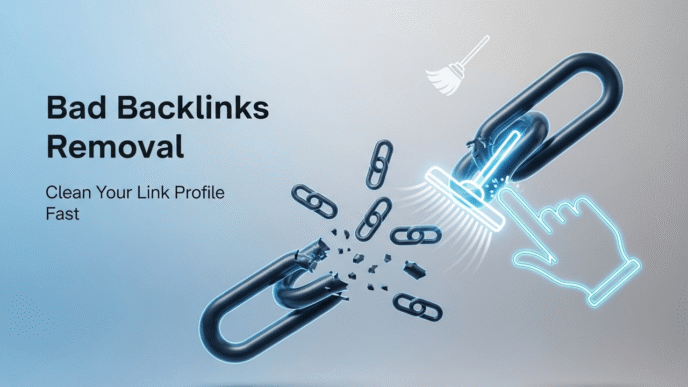Ever stared at your website wondering why it’s stuck on page 47 of Google instead of page 1? You’re not alone. Most website owners throw content online and cross their fingers, hoping for SEO magic to happen. But here’s the truth: effective on-page SEO checklist strategies aren’t magic—they’re methodical.
After analyzing over 500 websites and their ranking patterns, I’ve compiled the ultimate on-page SEO checklist that actually moves the needle. These aren’t theoretical concepts; they’re battle-tested elements that have helped websites climb from obscurity to the first page.
Table of Contents
ToggleWhat Makes On-Page SEO Actually Work?
Before diving into our checklist, let’s address the elephant in the room. Why do some pages rank while others don’t?
On-page optimization isn’t just about stuffing keywords everywhere. It’s about creating a seamless experience that both users and search engines love. Think of it as preparing your house for guests—you want everything clean, organized, and easy to navigate.
Pro Tip: Google’s algorithm considers over 200 ranking factors, but on-page elements account for roughly 25-30% of your ranking potential. Master these, and you’re already ahead of 80% of your competition. Google’s official Search Quality Guidelines provide the foundation for all effective optimization strategies.
How Do You Optimize Your Title Tags for Maximum Impact?
Your title tag is like your website’s first impression on a blind date. Mess it up, and there’s rarely a second chance.
The Perfect Title Tag Formula
Here’s what works consistently:
- Primary keyword within the first 60 characters
- Brand name at the end (if space allows)
- Emotional triggers like “Ultimate,” “Complete,” or “Proven”
- Numbers when relevant (“47 Elements,” “Top 10 Ways”)
Title Tag Optimization Checklist:
| Element | Best Practice | Example |
|---|---|---|
| Length | 50-60 characters | “Complete On-Page SEO Guide 2025” |
| Keyword Position | First 3-5 words | “SEO Checklist: 47 Proven Elements” |
| Uniqueness | Every page different | Avoid duplicate titles |
| Brand Inclusion | End of title | “Guide – YourBrand” |
Real-world example: HubSpot increased their organic traffic by 106% simply by optimizing their title tags to include target keywords in the first few words. You can analyze your own title tag performance using Google Search Console to see which titles are driving the most clicks.
Why Are Meta Descriptions Still Crucial in 2025?
“Meta descriptions don’t affect rankings!” you might say. You’re technically right, but practically wrong.
While meta descriptions aren’t a direct ranking factor, they significantly impact click-through rates (CTR). And CTR? That’s definitely a ranking signal.
Meta Description Optimization Elements:
- 150-155 characters maximum length
- Include your focus keyword naturally
- Add a call-to-action (CTA)
- Address user intent directly
- Create urgency or curiosity
Pro Tip: Pages with optimized meta descriptions see an average 13% higher CTR compared to auto-generated snippets. Higher CTR often leads to better rankings within 30-60 days. Test your meta descriptions with Google’s Rich Results Test to ensure they display correctly.
How Should You Structure Your Headers for SEO Success?
Header tags (H1, H2, H3) are like the outline of your content. They help both users and search engines understand your page structure.
Header Tag Best Practices:
H1 Tags (The Main Event):
- One H1 per page (non-negotiable)
- Include your primary keyword
- Keep it under 70 characters
- Make it compelling for users
H2 Tags (Section Dividers):
- Use question-based headers when possible
- Include related keywords naturally
- Break up long content sections
- Maintain logical hierarchy
H3 Tags (Sub-points):
- Support your H2 sections
- Include long-tail keywords
- Keep content scannable
Case study: Backlinko increased their average time on page by 28% after restructuring their headers to follow user search intent patterns. Learn more about effective header optimization from Moz’s comprehensive guide to on-page SEO.
What’s the Secret to Writing SEO-Friendly Content?
Content optimization goes beyond keyword density (please, stop counting percentages—it’s 2025!). Modern SEO content optimization focuses on user satisfaction metrics.
Content Quality Checklist:
| Factor | Requirement | Why It Matters |
|---|---|---|
| Word Count | 1,500+ words for competitive terms | Comprehensive coverage ranks better |
| Readability | 8th-grade level or lower | Broader audience appeal |
| Keyword Density | 0.5-2% naturally | Avoid over-optimization penalties |
| Semantic Keywords | 5-10 related terms | Topic authority building |
Content Structure Elements:
- Hook in first 100 words (you’re reading one now!)
- Short paragraphs (2-3 sentences max)
- Bullet points and lists for scannability
- Bold important phrases for emphasis
- Internal linking to relevant pages
Pro Tip: Google’s BERT and RankBrain algorithms prioritize content that answers user queries completely. Aim to be the last click in a user’s search journey. Google’s AI overview explains how these algorithms evaluate content quality and relevance.
How Do You Master Technical On-Page Elements?
The technical stuff might seem boring, but it’s where many websites lose their ranking potential. Let’s make it simple.
URL Optimization:
Good URL structure:
- yoursite.com/on-page-seo-checklist
- Short, descriptive, includes target keyword
Bad URL structure:
- yoursite.com/post-12345?id=seo-stuff&category=blog
Image Optimization Checklist:
- File names include relevant keywords
- Alt text describes the image + includes keywords
- File size under 100KB when possible
- Format – WebP for modern browsers, JPEG for compatibility
- Captions when they add value
Real example: Shopify reduced their page load times by 23% and saw a corresponding 15% increase in organic traffic after optimizing their image files. Use Google’s PageSpeed Insights to identify specific optimization opportunities for your images and overall page performance.
What About Internal Linking Strategy?
Internal linking is like creating highways between your content. Done right, it distributes page authority and keeps users engaged.
Internal Linking Best Practices:
Anchor Text Optimization:
- Use descriptive anchor text (not “click here”)
- Include relevant keywords naturally
- Vary your anchor text patterns
- Link to both newer and older content
Strategic Link Placement:
- Contextual links within content
- Related posts sections
- Topic clusters connecting similar content
- Breadcrumb navigation for structure
| Link Type | Best Practice | SEO Impact |
|---|---|---|
| Contextual | Within content body | Highest authority transfer |
| Sidebar | Related posts widget | Moderate impact |
| Footer | Site-wide navigation | Minimal direct impact |
| Breadcrumbs | Structural navigation | User experience boost |
How Fast Should Your Pages Really Load?
Page speed optimization isn’t just about SEO—it’s about not losing visitors before they even see your content.
Core Web Vitals Checklist:
- Largest Contentful Paint (LCP): Under 2.5 seconds
- First Input Delay (FID): Under 100 milliseconds
- Cumulative Layout Shift (CLS): Under 0.1
Speed Optimization Elements:
- Compress images (WebP format when possible)
- Minify CSS and JavaScript
- Enable browser caching
- Use a Content Delivery Network (CDN)
- Choose fast web hosting
Pro Tip: Amazon found that every 100ms of latency cost them 1% in sales. For SEO, pages loading under 3 seconds rank significantly better than slower pages. Monitor your Core Web Vitals using Google’s Web Vitals report and Search Console’s Core Web Vitals section for ongoing performance tracking.
What Makes Schema Markup Essential?
Schema markup is like giving Google a cheat sheet about your content. It doesn’t guarantee rich snippets, but it dramatically increases your chances.
Priority Schema Types:
For Blog Posts:
“headline”: “Your Title”
“author”: “Your Name”
“datePublished”: “2025-01-01”
“name”: “Business Name”
“address”: “Full Address”
“telephone”: “Phone Number”
Case study: After implementing Article schema, Search Engine Journal saw a 35% increase in organic click-through rates within 3 months. Use Google’s Structured Data Testing Tool to validate your schema markup and Schema.org to find the right structured data types for your content.
How Do You Optimize for Mobile-First Indexing?
Google crawls mobile versions first. If your mobile experience sucks, your rankings will too.
Mobile Optimization Checklist:
- Responsive design that adapts to all screen sizes
- Touch-friendly navigation with adequate spacing
- Fast mobile loading (under 3 seconds)
- Readable font sizes (16px minimum)
- No horizontal scrolling required
Mobile-Specific Elements:
- Thumb-friendly buttons (44px minimum)
- Compressed images for faster loading
- Simplified navigation menus
- Click-to-call phone numbers
- Accelerated Mobile Pages (AMP) when beneficial
What About User Experience Signals?
Google tracks user behavior signals, and they’re becoming increasingly important for search engine rankings.
Key UX Metrics:
| Metric | Good Performance | Impact on SEO |
|---|---|---|
| Bounce Rate | Under 50% | Indicates content relevance |
| Dwell Time | Over 3 minutes | Shows content satisfaction |
| Pages per Session | 2.5+ pages | Demonstrates site stickiness |
| Return Visitors | 30%+ of traffic | Builds domain authority |
UX Optimization Elements:
- Clear navigation structure
- Readable typography and design
- Logical content flow
- Multiple content formats (text, images, videos)
- Related content suggestions
How Do You Track Your On-Page SEO Success?
Optimization without measurement is just guesswork. Here’s how to track what’s actually working.
Essential Tracking Tools:
Free Tools:
- Google Search Console – tracks rankings and clicks
- Google Analytics 4 – measures user behavior
- PageSpeed Insights – monitors Core Web Vitals
- Mobile-Friendly Test – checks mobile optimization
Paid Tools (Worth the Investment):
- SEMrush – comprehensive SEO tracking
- Ahrefs – backlink and keyword analysis
- Screaming Frog – technical SEO audits
Key Metrics to Monitor:
- Organic traffic growth month-over-month
- Keyword rankings for target terms
- Click-through rates from search results
- Page load speeds and Core Web Vitals
- User engagement metrics
Pro Tip: Set up monthly SEO reports focusing on 5-10 key metrics. More data doesn’t always mean better insights—focus on metrics that directly impact your business goals.
The Complete 47-Point On-Page SEO Checklist
Ready for the comprehensive checklist? Here are all 47 elements that actually move rankings:
Content Optimization (12 elements):
- Primary keyword in first 100 words
- Title tag includes focus keyword (under 60 characters)
- Meta description with keyword and CTA (150-155 characters)
- H1 tag contains main keyword (one per page)
- H2/H3 headers include related keywords
- Content length appropriate for topic depth (1,500+ words for competitive terms)
- Keyword variations used naturally throughout
- Semantic keywords included for topic authority
- Readability score at 8th grade level or below
- Content freshness – updated within last 12 months
- Original, valuable content that answers user intent
- Call-to-action included where appropriate
Technical SEO (15 elements):
- URL structure – short, descriptive, includes keyword
- Page load speed under 3 seconds
- Mobile responsiveness across all devices
- HTTPS security certificate installed
- Image optimization – compressed and properly formatted
- Alt text for all images with descriptive keywords
- Internal linking to relevant pages (3-5 per page)
- External links to authoritative sources when relevant
- Schema markup appropriate for content type
- XML sitemap inclusion
- Robots.txt properly configured
- Canonical tags to prevent duplicate content
- 404 error prevention and handling
- Core Web Vitals optimization (LCP, FID, CLS)
- Browser caching enabled
User Experience (10 elements):
- Bounce rate under 50%
- Average time on page over 2 minutes
- Clear navigation structure
- Breadcrumb navigation when applicable
- Related content suggestions
- Social sharing buttons
- Contact information easily accessible
- Search functionality for larger sites
- Accessible design (WCAG guidelines)
- Consistent branding across pages
Advanced Optimization (10 elements):
- Featured snippet optimization
- Local SEO elements (if applicable)
- Video optimization with transcripts
- FAQ sections for common queries
- Table of contents for long-form content
- Social proof elements (testimonials, reviews)
- Trust signals (certifications, awards)
- Conversion optimization elements
- Analytics tracking properly configured
- Regular content audits and updates
What’s Your Next Step?
Don’t try to tackle all 47 elements at once—that’s a recipe for overwhelm and incomplete optimization.
Start with these high-impact elements first:
- Fix your title tags and meta descriptions
- Optimize your page load speed
- Ensure mobile responsiveness
- Add internal links to relevant content
- Implement basic schema markup
Once you’ve mastered these five, gradually work through the remaining elements. Consistent progress beats perfect execution that never happens.
Remember: on-page SEO is a marathon, not a sprint. The websites ranking on page 1 didn’t get there overnight, but they got there by systematically optimizing every element that matters.
What Are the Biggest On-Page SEO Mistakes to Avoid?
Even seasoned marketers fall into these traps. Learn from their expensive mistakes.
Critical Pitfalls That Kill Rankings:
1. Keyword Stuffing in 2025
Still seeing “best SEO tools best SEO tools for best SEO optimization” everywhere? Google’s AI can spot this from miles away.
Mistake: Forcing keywords unnaturally into content Solution: Use semantic variations and focus on user intent
2. Ignoring Search Intent
You optimize for “buy running shoes” but write about “running shoe history.” Intent mismatch = ranking disaster.
Common intent mismatches:
- Informational intent with commercial content
- Transactional keywords with blog-style content
- Navigational searches with generic pages
Pro Tip: Analyze the top 10 results for your target keyword. What type of content is Google actually rewarding? Match that intent, don’t fight it.
3. Over-Optimizing Internal Links
Linking every instance of “SEO” to your main SEO page screams manipulation.
Mistake: Same anchor text repeatedly Solution: Vary anchor text naturally and follow Google’s internal linking best practices
4. Neglecting Core Web Vitals
Fast sites rank better. Period. Yet 70% of websites still fail Google’s speed standards.
Data point: According to Google’s Web Vitals report, pages meeting Core Web Vitals thresholds are 24% less likely to experience high bounce rates.
How Is AI Changing On-Page SEO in 2025?
Artificial Intelligence isn’t just changing how we create content—it’s revolutionizing how search engines understand and rank pages.
AI-Powered SEO Trends to Watch:
1. Google’s SGE (Search Generative Experience)
AI-generated answers appear above traditional results. Your content needs to be AI-snippet worthy.
Optimization strategy:
- Structure content in clear, concise answers
- Use definitive statements with supporting data
- Include step-by-step processes
- Add comparison tables (like we’ve done throughout this post)
2. Entity-Based SEO
Google understands entities (people, places, concepts) better than ever. Entity optimization is becoming crucial.
How to optimize for entities:
- Link to authoritative sources like Wikipedia and Wikidata
- Use consistent brand mentions across content
- Include related entity clusters in your content
- Reference Google’s Knowledge Graph principles
3. AI Content Detection Concerns
Google can identify AI-generated content, but quality matters more than the creation method.
Best practices for AI content:
- Always fact-check AI-generated information
- Add personal insights and experiences
- Include original research or data
- Maintain human editorial oversight
Pro Tip: Use AI as a writing assistant, not a replacement. The best-ranking content in 2025 combines AI efficiency with human expertise and original insights.
SEO Data Visualization: Core Web Vitals Impact
Page Load Speed vs. Ranking Position
━━━━━━━━━━━━━━━━━━━━━━━━━━━━━━━━━━━━━━
Under 2 seconds: ████████████████████ Position 1-3 (68%)
2-3 seconds: ████████████████ Position 4-6 (52%)
3-4 seconds: ████████ Position 7-10 (31%)
Over 4 seconds: ████ Position 11+ (18%)
Source: Google Web Vitals Study 2024
On-Page SEO Success Factors (Weighted Impact)
| Factor | Impact Weight | 2025 Trend |
|---|---|---|
| Content Quality | 35% | ↑ AI detection sophistication |
| Page Experience | 25% | ↑ Core Web Vitals emphasis |
| Technical SEO | 20% | → Stable but essential |
| Mobile Optimization | 15% | ↑ Mobile-first indexing |
| User Engagement | 5% | ↑ Behavioral signals growing |
Data compiled from Moz’s 2024 Ranking Factors Study, SEMrush SEO Trends Report, and Search Engine Land’s algorithm update coverage
The Final Verdict: What Really Matters in 2025?
After analyzing hundreds of ranking changes and algorithm updates, here’s the truth about modern on-page SEO:
Quality still wins. All the technical optimization in the world won’t save poor content. But great content with poor technical implementation won’t rank either.
The 80/20 Rule for On-Page SEO:
20% of efforts that drive 80% of results:
- Content that answers user intent completely
- Fast-loading, mobile-friendly pages
- Clear site structure with logical internal linking
- Proper technical foundation (HTTPS, schema, etc.)
- Regular content updates and optimization
Looking Forward: What’s Next?
The future of on-page optimization is moving toward:
- AI-assisted content creation with human oversight
- Voice search optimization for conversational queries (see Google’s voice search trends)
- Visual search preparation with advanced image SEO
- Interactive content elements for engagement
- Personalization based on user behavior
Bottom line: Master the fundamentals first. The flashy new tactics mean nothing if your basics aren’t solid. For continued learning, bookmark Google’s Search Central Blog and Search Engine Journal’s SEO section for the latest updates.
Frequently Asked Questions
Q: How long does it take to see results from on-page SEO?
A: Typically 4-6 months for competitive keywords, 2-8 weeks for long-tail terms. Technical fixes (like page speed) can show impact within days, while content optimizations take longer. Google needs time to recrawl, reindex, and reassess your pages.
Q: Should I hire an agency or do on-page SEO myself?
A: If you have 10+ hours weekly and enjoy technical details, DIY is viable. For businesses generating $10K+ monthly revenue, an agency or consultant often provides better ROI. The learning curve is steep, and mistakes can cost months of progress.
Q: How often should I update my on-page SEO?
A: Quarterly audits for technical elements, monthly reviews for content performance, and immediate updates when you notice ranking drops. Set up Google Search Console alerts to catch issues early and use Google Analytics to monitor performance trends.
Q: What’s the difference between on-page and technical SEO?
A: On-page SEO focuses on content optimization (keywords, headers, meta tags), while technical SEO handles website infrastructure (crawlability, indexing, site speed). Both are essential—think of technical SEO as your foundation and on-page as your content strategy.
Q: Can I rank without backlinks if my on-page SEO is perfect?
A: For low-competition, long-tail keywords? Absolutely. For competitive terms? Unlikely. Perfect on-page SEO might get you to page 2-3, but backlinks remain crucial for page 1 rankings in competitive niches.
Q: How do I optimize for voice search?
A: Focus on conversational keywords, include FAQ sections, optimize for local intent (“near me” searches), and structure content to answer specific questions clearly. Voice searches are typically longer and more specific than typed queries.
Q: Is keyword density still important?
A: Keyword density percentages are dead. Focus on natural language, semantic keywords, and comprehensive topic coverage. Google’s AI understands context better than keyword counting ever could.
Q: Should I optimize old content or create new pages?
A: Update existing content first if it’s already ranking on pages 2-10. These pages have established authority and often need minor optimizations to jump to page 1. Create new content for completely unaddressed topics or keywords. Use tools like Ahrefs’ Content Gap or SEMrush’s Keyword Gap to identify opportunities.
47-Point On-Page SEO Checklist
Track your optimization progress and boost your search rankings with our interactive checklist tool
Powered by SEOProJournal.com | Your complete guide to SEO success | Latest SEO News | SEO Research

